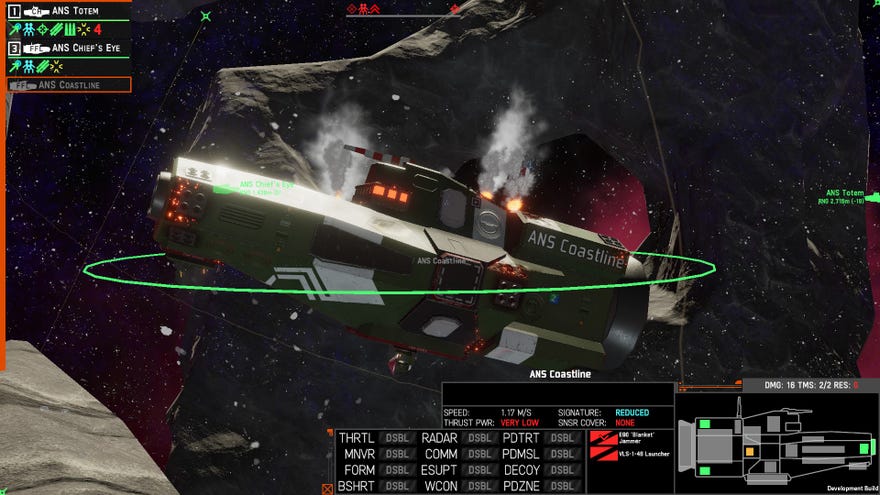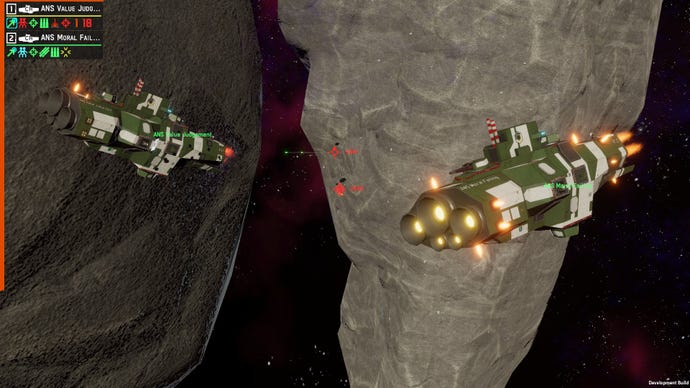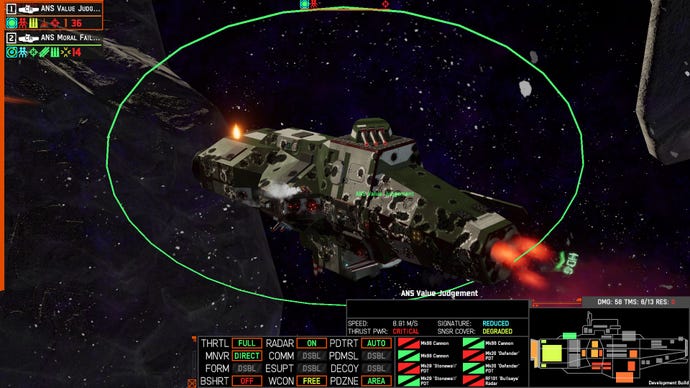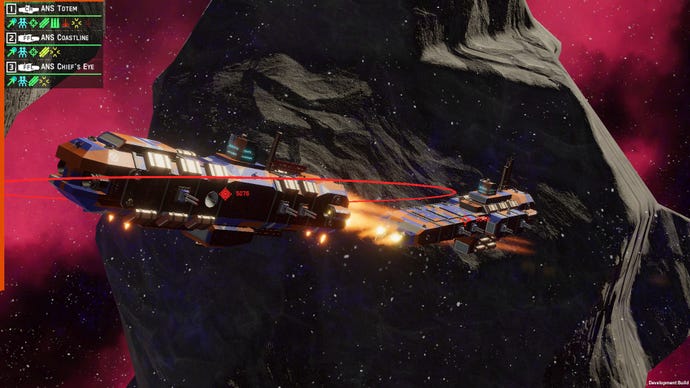HomeFeaturesNebulous: Fleet Command
Nebulous: Fleet Command is the hardcore version of Homeworld I didn’t know I wantedA new angle on real-time 3D space strategy
A new angle on real-time 3D space strategy
Image credit:Hooded Horse/Rock Paper Shotgun
Image credit:Hooded Horse/Rock Paper Shotgun

Every “incoming missile” alert inNebulous: Fleet Commandspawns a host of questions, scattering through your brain pan like chaff. The most important of those questions is: “which missiles, exactly?” There are many species of self-propelled ordnance in this dangerously engrossingspace simfrom Eriadanus Industries - you can design your very own in the fleet editor - and while all are bad news, some are far worse than others.
The least deadly varieties take their targeting information from the ship that fired them. In a straightforward engagement, you’ll be able to see the vessel concerned, but craftier admirals might use one tougher frontline ship as a spotter, sharing lock-on data with another, undetected artillery platform lurking in the radar shadow of an asteroid. If there are no ships visible at all, the missiles could be self-guided with their own radar equipment, and the knock-on question there is exactly how far away they’ve come from, and via what precise twists and turns.
NEBULOUS: Fleet Command - Modular Missiles Update Release TrailerWatch on YouTube
NEBULOUS: Fleet Command - Modular Missiles Update Release Trailer

I haven’t managed this myself, but according to Fleet Command’s dense tutorial missions, you can plot paths for certain kinds of missile, waypointing them around the map to catch the enemy flagship from behind, then letting the homing mechanisms take over (which assumes the enemy flagship is where you think it is). Given that such missiles share sensor data with the rest of your fleet that fired them, they can also be used for reconnaissance, though you certainly shouldn’t treat them like disposable probes.
But every so often, you read the horrible word “hybrids”. These are the velociraptors of the missile menagerie, equipped with a second-stage “sprint” feature that makes rudimentary evasion and point defence all but useless. The game’s kindly tutorial lady describes avoiding a hybrid as like avoiding a telegraph pole that is corkscrewing towards your face at a kilometre a second. Which I think is underselling it, because telegraph poles do not have massive bombs attached to them, and they aren’t capable of tracking your movements across several million cubic kilometres of vacuum.
Image credit:Hooded Horse/Rock Paper Shotgun

Nebulous: Fleet Command’s early access plans include a full-blown single-player Conquest mode reminiscent of Battlefront, which joins up skirmish battles into an on-going campaign for control of a solar system, together with a “story-driven conquest scenario”. They’re also working on carriers and fighter craft, procedurally generated asteroid “thickets”, and various AI improvements such as the ability to make assumptions about the player’s behaviour. You can keep track of it all on the dev’spublic trello. Launched in February 2022, the game will spend “up to two years” in early access. It already has apretty prosperous modding scene.
Let’s talk about direct fire engagements - a complicated dance of hulls that is at once agonisingly slow and incredibly fast. Slow, because the game’s ships are ponderous - having locked onto an enemy, it may take them moments to get close enough that every shot has positive odds of connecting. And fast, because there are a frightful number of micro-managerial decisions to make while these juggernauts are approaching each other.
For one thing, there’s the question of spreading out your damage. Every ship in Fleet Command is a 3D arrangement of components and armour-plating. When you come under fire, the components on that side get hit first. Thus, if you charge directly at something that’s shooting armour-piercing shells at you, your ship’s forward components will end up full of holes. This includes your bow thrusters, which will be a problem for you when you realise your fuel lines are on fire and struggle to reverse out of harm’s way.
Image credit:Hooded Horse/Rock Paper Shotgun

So what you want to do instead is “angle-tank”. Fleet Command offers up a dizzying assortment of movement options, from plotting out patrols through having ships orbit a point in space to ordering your ship to travel in one direction indefinitely. When it comes to straight-up duels, you can give your ship a heading, which forces them to fly at a certain angle to the direction of movement. This will likely make inefficient use of their thrusters, but it will also hopefully mean that incoming shells hit your armour at an angle, deflecting a bit of damage.
Image credit:Hooded Horse/Rock Paper Shotgun

At times Nebulous: Fleet Command feels like a vicious trap forHomeworldplayers desperate to play something, anything in the same vein. It certainly takes inspiration from the grand old dame of 3D real-time spacestrategy- the same boxy, diecast ship aesthetics, and a familiar bass drop when you switch to the holographic planner view. But then you try to play it like Homeworld, and realise you can’t just drag-select fleets and right-click them at the enemy - this is a Serious Simulation, in which your prowess as an admiral can be deduced near-exactly from the distribution of shell craters on each hull.
Again, it can be absolutely overwhelming. But it’s never brutally so. Look at the delicacy and obvious delight with which all these moving parts have been put together. Marvel at the symphony of each ship in motion - the way its course and orientation correspond to the flickering of thrusters across its length, as though the hulk were skimming through the void on feathers. If Eridanus Industries can find a way to convey the intricacies of Fleet Command more gradually, perhaps expanding the current narrated tutorial into a full single player campaign, this could be a space navy simulator for the ages.